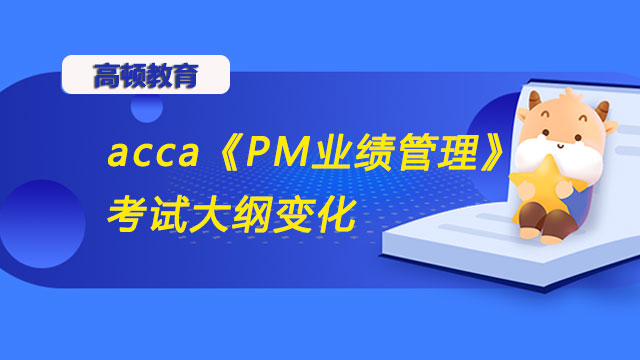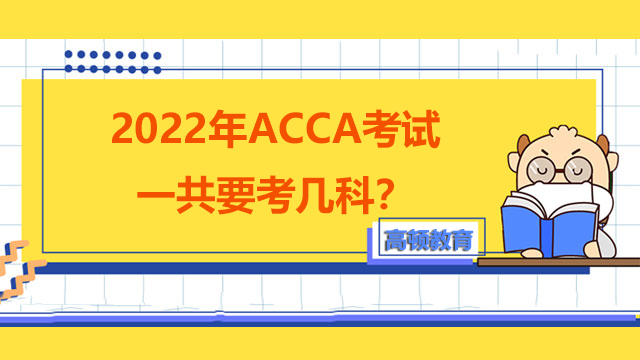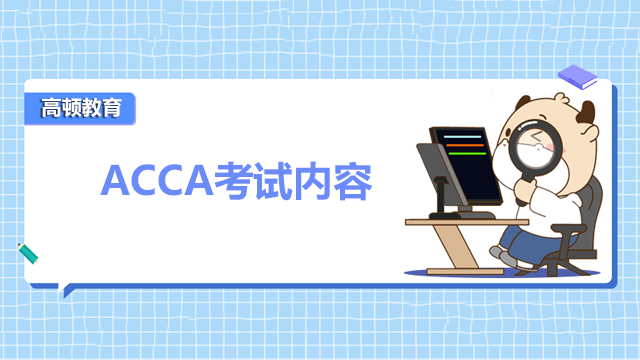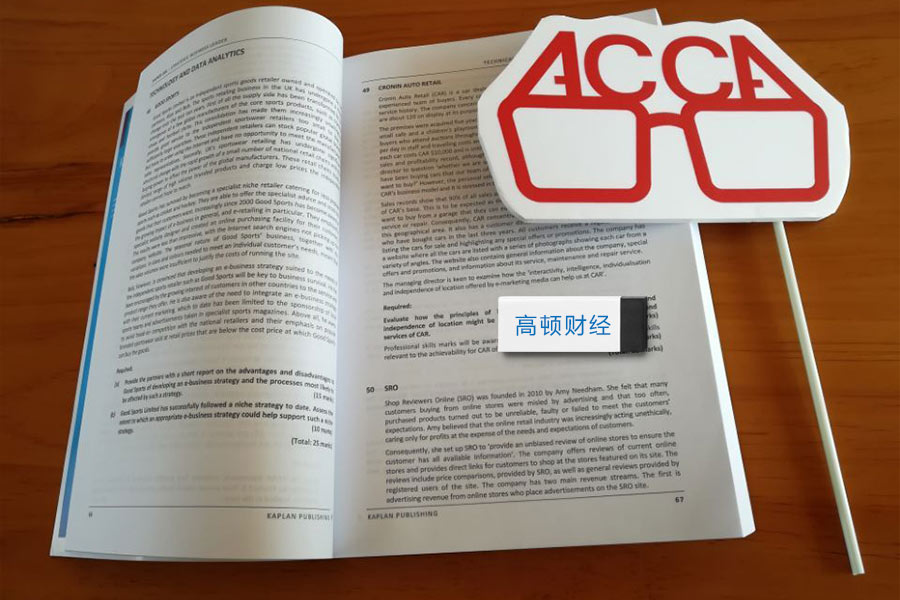2015ACCA F8 审计与认证业务考试大纲
来源:
高顿网校
2015-03-25
? ACCA 2014 All rights reserved.
1
Audit and Assurance (F8)
December 2014 to June
2015
This syllabus and study guide is designed to help
This syllabus and study guide is designed to help
with planning study and to provide detailed
information on what could be assessed in
any examination session.
THE STRUCTURE OF THE SYLLABUS AND
STUDY GUIDE
Relational diagram of paper with other papers
This diagram shows direct and indirect links
between this paper and other papers preceding or
following it. Some papers are directly underpinned
by other papers such as Advanced Performance
Management by Performance Management. These
links are shown as solid line arrows. Other papers
only have indirect relationships with each other
such as links existing between the accounting and
auditing papers. The links between these are shown
as dotted line arrows. This diagram indicates where
you are expected to have underpinning knowledge
and where it would be useful to review previous
learning before undertaking study.
Overall aim of the syllabus
This explains briefly the overall objective of the
paper and indicates in the broadest sense the
capabilities to be developed within the paper.
Main capabilities
This paper’s aim is broken down into several main
capabilities which divide the syllabus and study
guide into discrete sections.
Relational diagram of the main capabilities
This diagram illustrates the flows and links between
the main capabilities (sections) of the syllabus and
should be used as an aid to planning teaching and
learning in a structured way.
Syllabus rationale
This is a narrative explaining how the syllabus is
structured and how the main capabilities are linked.
The rationale also explains in further detail what the
examination intends to assess and why.
Detailed syllabus
This shows the breakdown of the main capabilities
(sections) of the syllabus into subject areas. This is
the blueprint for the detailed study guide.
Approach to examining the syllabus
This section briefly explains the structure of the
examination and how it is assessed.
Study Guide
This is the main document that students, learning
and content providers should use as the basis of
their studies, instruction and materials.
Examinations will be based on the detail of the
study guide which comprehensively identifies what
could be assessed in any examination session.
The study guide is a precise reflection and
breakdown of the syllabus. It is divided into sections
based on the main capabilities identified in the
syllabus. These sections are divided into subject
areas which relate to the sub-capabilities included
in the detailed syllabus. Subject areas are broken
down into sub-headings which describe the detailed
outcomes that could be assessed in examinations.
These outcomes are described using verbs
indicating what exams may require students to
demonstrate, and the broad intellectual level at
which these may need to be demonstrated
(*see intellectual levels below)。
INTELLECTUAL LEVELS
The syllabus is designed to progressively broaden
and deepen the knowledge, skills and professional
values demonstrated by the student on their way
through the qualification.
The specific capabilities within the detailed
syllabuses and study guides are assessed at one of
three intellectual or cognitive levels:
LevelⅠ: Knowledge and comprehension
? ACCA 2014 All rights reserved.
2
LevelⅡ: Application and analysis
LevelⅢ: Synthesis and evaluation
Very broadly, these intellectual levels relate to the
three cognitive levels at which the Knowledge
module, the Skills module and the Professional level
are assessed.
Each subject area in the detailed study guide
included in this document is given a 1, 2, or
3 superscript, denoting intellectual level, marked at
the end of each relevant line. This gives an
indication of the intellectual depth at which an area
could be assessed within the examination. However,
while level 1 broadly equates with the Knowledge
module, level 2 equates to the Skills module and
level 3 to the Professional level, some lower level
skills can continue to be assessed as the student
progresses through each module and level. This
reflects that at each stage of study there will be a
requirement to broaden, as well as deepen
capabilities. It is also possible that occasionally
some higher level capabilities may be assessed at
lower levels.
LEARNING HOURS AND EDUCATION
RECOGNITION
The ACCA qualification does not prescribe or
recommend any particular number of learning hours
for examinations because study and learning
patterns and styles vary greatly between people and
organisations. This also recognises the wide
diversity of personal, professional and educational
circumstances in which ACCA students find
themselves.
As a member of the International Federation of
Accountants, ACCA seeks to enhance the education
recognition of its qualification on both national and
international education frameworks, and with
educational authorities and partners globally. In
doing so, ACCA aims to ensure that its qualifications
are recognized and valued by governments,
regulatory authorities and employers across all
sectors. To this end, ACCA qualifications are
currently recognized on the education frameworks in
several countries. Please refer to your national
education framework regulator for further
information.
Each syllabus contains between 23 and 35 main
subject area headings depending on the nature of
the subject and how these areas have been broken
down.
GUIDE TO EXAM STRUCTURE
The structure of examinations varies within and
between modules and levels.
The Fundamentals level examinations contain
100% compulsory questions to encourage
candidates to study across the breadth of each
syllabus.
The Knowledge module is assessed by equivalent
two-hour paper based and computer based
examinations.
The Skills module examinations F5-F9 are all paper
based three-hour papers containing a mix of
objective and longer type questions. The Corporate
and Business Law (F4) paper is a two- hour
computer based objective test examination which is
also available as a paper based version from the
December 2014 examination session.
The Professional level papers are all three-hour
paper based examinations, all containing two
sections. Section A is compulsory, but there will be
some choice offered in Section B.
For all three hour examination papers, ACCA has
introduced 15 minutes reading and planning time.
This additional time is allowed at the beginning of
each three-hour examination to allow candidates to
read the questions and to begin planning their
answers before they start writing in their answer
books. This time should be used to ensure that all
the information and exam requirements are properly
read and understood.
During reading and planning time candidates may
only annotate their question paper. They may not
write anything in their answer booklets until told to
do so by the invigilator.
The Essentials module papers all have a Section A
containing a major case study question with all
requirements totalling 50 marks relating to this
case. Section B gives students a choice of two from
three 25 mark questions.
? ACCA 2014 All rights reserved.
3
Section A of both the P4 and P5 Options papers
contain one 50 mark compulsory question, and
Section B will offer a choice of two from three
questions each worth 25 marks each.
Section A of each of the P6 and P7 Options papers
contains 60 compulsory marks from two questions;
question 1 attracting 35 marks, and question 2
attracting 25 marks. Section B of both these
Options papers will offer a choice of two from three
questions, with each question attracting 20 marks.
All Professional level exams contain four
professional marks.
The pass mark for all ACCA Qualification
examination papers is 50%.
GUIDE TO EXAMINATION ASSESSMENT
ACCA reserves the right to examine anything
contained within the study guide at any examination
session. This includes knowledge, techniques,
principles, theories, and concepts as specified.
For the financial accounting, audit and assurance,
law and tax papers except where indicated
otherwise, ACCA will publish examinable
documents once a year to indicate exactly
what regulations and legislation could potentially be
assessed within identified examination sessions
For paper based examinations regulation issued or
legislation passed on or before 31st August
annually, will be examinable from 1st September of
the following year to 31st August t of the year after
that. Please refer to the examinable documents for
the paper (where relevant) for further information.
Regulation issued or legislation passed in
accordance with the above dates may be
examinable even if the effective date is in the future.
The term issued or passed relates to when
regulation or legislation has been formally approved.
The term effective relates to when regulation or
legislation must be applied to an entity transactions
and business practices.
The study guide offers more detailed guidance on
the depth and level at which the examinable
documents will be examined. The study guide
should therefore be read in conjunction with the
examinable documents list.
? ACCA 2014 All rights reserved.
4
Syllabus
AIM
To develop knowledge and understanding of the
process of carrying out the assurance engagement
and its application in the context of the professional
regulatory framework.
MAIN CAPABILITIES
On successful completion of this paper, candidates
should be able to:
A Explain the concept of audit and assurance and
the functions of audit, corporate governance,
including ethics and professional conduct,
describing the scope and distinguishing
between the functions of internal and external
audit
B Demonstrate how the auditor obtains and
accepts audit engagements obtains an
understanding of the entity and its
environment, assesses the risk of material
misstatement (whether arising from fraud or
other irregularities) and plans an audit of
financial statements
C Describe and evaluate internal controls,
techniques and audit tests, including IT
systems to identify and communicate control
risks and their potential consequences, making
appropriate recommendations
D Identify and describe the work and evidence
obtained by the auditor and others required to
meet the objectives of audit engagements and
the application of the International Standards
on Auditing
E Explain how consideration of subsequent
events and the going concern principle can
inform the conclusions from audit work
and are reflected in different types of audit
report, written representations and the final
review and report.
RELATIONAL DIAGRAM OF MAIN CAPABILITIES
AA
(F8)
AAA
(P7)
CL (F4) FR (F7)
PA
(P1)
Review and reporting (E)
Planning and Risk assessment (B)
Internal control (C) Audit evidence (D)
Audit framework and regulation (A)
? ACCA 2014 All rights reserved.
5
RATIONALE
The Audit and Assurance syllabus is essentially
divided into five areas. The syllabus starts with the
nature, purpose and scope of assurance
engagements both internal and external, including
the statutory audit, its regulatory environment, and
introduces governance and professional ethics
relating to audit and assurance. It then leads into
planning and risk assessment audit. The syllabus
then covers a range of areas relating to an audit of
financial statements including the scope of internal
control. These include, evaluating internal controls,
audit evidence, and a review of the financial
statements. The final section then deals with
reporting, including statutory audit reports,
management reports, and internal audit reports.
? ACCA 2014 All rights reserved.
6
DETAILED SYLLABUS
A. Audit framework and regulation
1. The concept of audit and other assurance
engagements
2. External audits
3. Corporate governance
4. Professional ethics and ACCA’s Code of Ethics
and Conduct
5. Internal audit and governance and the
differences between external audit and internal
audit
6. The scope of the internal audit function,
outsourcing and internal audit assignments
B. Planning and risk assessment
1. Obtaining and accepting audit engagements
2. Objective and general principles
3. Assessing audit risks
4. Understanding the entity and its environment
5. Fraud, laws and regulations
6. Audit planning and documentation
C. Internal control
1. Internal control systems
2. The use and evaluation of internal control
systems by auditors
3. Tests of control
4. Communication on internal control
D. Audit evidence
1. Financial statement assertions and audit
evidence
2. Audit procedures
3. Audit sampling and other means of testing
4. The audit of specific items
5. Computer-assisted audit techniques
6. The work of others
7 Not-for-profit organisations
E. Review and reporting
1. Subsequent events
2. Going concern
3. Written representations
4. Audit finalisation and the final review
5. Audit reports
APPROACH TO EXAMINING THE SYLLABUS
The syllabus is assessed by a three-hour paperbased
examination, All questions are compulsory.
Section A of the exam comprises 8 two mark
questions and four one mark multiple choice
questions giving a total of 20 marks for that section.
Section B of the exam comprises four 10 mark
questions and two longer 20 mark questions.
The 20 mark questions will predominantly examine
one or more aspects of audit and assurance from
planning and risk assessment, internal control or
audit evidence, although topics from other syllabus
areas may also be included
? ACCA 2014 All rights reserved.
7
Study Guide
A AUDIT FRAMEWORK AND REGULATION
1. The concept of audit and other assurance
engagements
a) Identify and describe the objective and general
principles of external audit engagements.[2]
b) Explain the nature and development of audit
and other assurance engagements.[1]
c) Discuss the concepts of accountability,
stewardship and agency.[2]
d) Define and provide the objectives of an
assurance engagement.[1]
e) Explain the five elements of an assurance
engagement.[2]
f) Describe the types of assurance engagement[2]
g) Explain the level of assurance provided by an
external audit and other review engagements
and the concept of true and fair presentation.[1]
2. External audits
a) Describe the regulatory environment within
which external audits take place.[1]
b) Discuss the reasons and mechanisms for the
regulation of auditors.[1]
c) Explain the statutory regulations governing the
appointment, rights, removal and resignation of
auditors.[1]
d) Explain the regulations governing the rights and
duties of auditors[1]
e) Describe the limitations of external audits.[1]
f) Explain the development and status of
International Standards on Auditing (ISAs)。[1]
g) Explain the relationship between International
Standards on Auditing and national
standards.[1]
3. Corporate governance
a) Discuss the objectives, relevance and
importance of corporate governance.[2]
b) Discuss the provisions of international codes of
corporate governance (such as OECD) that are
most relevant to auditors.[2]
c) Describe good corporate governance
requirements relating to directors’
responsibilities (e.g. for risk management and
internal control) and the reporting
responsibilities of auditors.[2]
d) Analyse the structure and roles of audit
committees and discuss their benefits and
limitations.[2]
e) Explain the importance of internal control and
risk management.[1]
f) Discuss the need for auditors to communicate
with those charged with governance.[2]
4. Professional ethics and ACCA’s Code of Ethics
and Conduct
a. Define and apply the fundamental principles of
professional ethics of integrity, objectivity,
professional competence and due care,
confidentiality and professional behaviour.[2]
b) Define and apply the conceptual framework,
including the threats to the fundamental
principles of self-interest, self-review,
advocacy, familiarity, and intimidation.[2]
c) Discuss the safeguards to offset the threats to
the fundamental principles.[2]
d) Describe the auditor’s responsibility with regard
to auditor independence, conflicts of interest
and confidentiality.[1]
5. Internal audit and governance, and the
differences between external audit and internal
audit
a) Discuss the factors to be taken into account
when assessing the need for internal audit.[2]
? ACCA 2014 All rights reserved.
8
b) Discuss the elements of best practice in the
structure and operations of internal audit with
reference to appropriate international codes of
corporate governance.[2]
c) Compare and contrast the role of external and
internal audit.[2]
6. The scope of the internal audit function,
outsourcing and internal audit assignments
a) Discuss the scope of internal audit and the
limitations of the internal audit function.[2]
b) Explain outsourcing.[1]
c) Explain the advantages and disadvantages of
outsourcing the internal audit function.[1]
d) Discuss the nature and purpose of internal
audit assignments including value for money,
IT, financial, regulatory compliance, fraud
investigations and customer experience.[2]
e) Discuss the nature and purpose of operational
internal audit assignments [2]
f) Describe the format and content of audit
review reports and make appropriate
recommendations to management and those
charged with governance[2]
B PLANNING AND RISK ASSESSMENT
1. Obtaining and accepting audit engagements
a) Discuss the requirements of professional ethics
in relation to the acceptance of new audit
engagements [2]
b) Explain the preconditions for an audit [2]
c) Explain the process by which an auditor
obtains an audit engagement [2]
d) Justify the importance of engagement letters
and their contents [1]
1
a) Identify the overall objectives of the auditor and
the need to conduct an audit in accordance
with ISAs.[2]
b) Explain the need to plan and perform audits
with an attitude of professional scepticism, and
to exercise professional judgment.[2]
3. Assessing audit risks
a) Explain the components of audit risk.[1]
b) Explain the audit risks in the financial
statements and explain the auditor’s response
to each risk.[2]
c) Define and explain the concepts of materiality
and performance materiality.[2]
d) Explain and calculate materiality levels from
financial information.[2]
4. Understanding the entity and its environment
a) Explain how auditors obtain an initial
understanding of the entity and its
environment.[2]
b) Describe and explain the nature, and purpose
of, analytical procedures in planning.[2]
c) Compute and interpret key ratios used in
analytical procedures.[2]
5. Fraud, laws and regulations
a) Discuss the effect of fraud and misstatements
on the audit strategy and extent of audit
work.[2]
b) Discuss the responsibilities of internal and
external auditors for the prevention and
detection of fraud and error.[2]
c) Explain the auditor’s responsibility to consider
laws and regulations.[2)
? ACCA 2014 All rights reserved.
9
6. Audit planning and documentation
a) Identify and explain the need for and
importance of planning an audit.[2]
b) Identify and describe the contents of the overall
audit strategy and audit plan.[2]
c) Explain and describe the relationship between
the overall audit strategy and the audit plan.[2]
d) Explain the difference between interim and
final audit.[1]
e) Describe the purpose of an interim audit, and
the procedures likely to be adopted at this
stage in the audit.[2]
f) Describe the impact of the work performed
during the interim audit on the final audit.[2]
g) Explain the need for, and the importance of,
audit documentation. [1]
h) Describe the form and contents of working
papers and supporting documentation.[2]
i) Explain the procedures to ensure safe custody
and retention of working papers.[1]
C INTERNAL CONTROL
1. Internal control systems
a) Explain why an auditor needs to obtain an
understanding of internal control relevant to
the audit.[1]
b) Describe and explain the five components of
internal control[2]
i) the control environment
ii) the entity’s risk assessment process,
iii) the information system, including the
related business processes, relevant to
financial reporting, and communication
iv) control activities relevant to the audit
v) monitoring of controls
2. The use and evaluation of internal control
systems by auditors
a) Explain how auditors record internal control
systems including the use of, narrative notes,
flowcharts, internal control questionnaires and
internal control evaluation questionnaires. [2]
b) Evaluate internal control components,
including deficiencies and significant
deficiencies in internal control.[2]
c) Discuss the limitations of internal control
components [2]
3. Tests of control
a) Describe computer systems controls including
general IT controls and application controls {2}
b) Describe control objectives, control procedures,
activities and tests of control in relation to:
i) The sales system;
ii) The purchases system
iii) The payroll system
iv) The inventory system
v) The cash system
vi) Non-current assets
4. Communication on internal control
a) Discuss and provide examples of how the
reporting of significant deficiencies in internal
control and recommendations to overcome
those significant deficiencies are provided to
management.[2]
D AUDIT EVIDENCE
1. Financial statement assertions and audit
evidence
a) Explain the assertions contained in the
financial statements about:[2]
(i) Classes of transactions and events;
(ii) Account balances at the period end;
(iii) Presentation and disclosure
b) Describe audit procedures to obtain audit
evidence , including inspection , observation,
external confirmation, recalculation, re?
ACCA 2014 All rights reserved.
10
performance, analytical procedures and
enquiry[2]
c) Discuss the quality and quantity of audit
evidence[2]
d) Discuss the relevance and reliability of audit
evidence [2]
2. Audit procedures
a) Discuss substantive procedures for obtaining
audit evidence [2]
b) Discuss and provide examples of how
analytical procedures are used as substantive
procedures[2]
c) Discuss the problems associated with the audit
and review of accounting estimates.[2]
d) Describe why smaller entities may have
different control environments and describe the
types of evidence likely to be available in
smaller entities.[1]
e) Discuss the difference between tests of control
and substantive procedures[2]
3. Audit sampling and other means of testing
a) Define audit sampling and explain the need for
sampling.[1]
b) Identify and discuss the differences between
statistical and non-statistical sampling.[2]
c) Discuss and provide relevant examples of, the
application of the basic principles of statistical
sampling and other selective testing
procedures. [2]
d) Discuss the results of statistical sampling,
including consideration of whether additional
testing is required.[2]
4. The audit of specific items
For each of the account balances stated in this subcapability:
Explain the audit objectives and the audit
procedures in relation to:
a) Receivables: [2]
i) direct confirmation of accounts receivable
ii) other evidence in relation to receivables
and prepayments, and
iii) completeness and occurrence of sale
b) Inventory: [2]
i) inventory counting procedures in relation
to year-end and continuous inventory
systems
ii) cut-off
iii) auditor’s attendance at inventory counting
iv) direct confirmation of inventory held by
third parties,
v) valuation
vi) other evidence in relation to inventory.
c) Payables and accruals: [2]
i) supplier statement reconciliations and
direct confirmation of accounts payable,
ii) obtain evidence in relation to payables
and accruals, and
iii) purchases and other expenses.
d) Bank and cash: [2]
i) bank confirmation reports used in
obtaining evidence in relation to bank and
cash
ii) other evidence in relation to bank and
iii) other evidence in relation to cash.
e) Tangible and intangible non-current assets [2]
i) evidence in relation to non-current assets
and
ii) depreciation
iii) profit/loss on disposal
f) Non-current liabilities, provisions and
contingencies[2]
i) evidence in relation to non-current
liabilities
ii) provisions and contingencies
g) Share capital, reserves and directors’
emoluments: [2]
i) evidence in relation to share capital,
reserves and directors’ emoluments
? ACCA 2014 All rights reserved.
11
5. Computer-assisted audit techniques
a) Explain the use of computer-assisted audit
techniques in the context of an audit.[1]
b) Discuss and provide relevant examples of the
use of test data and audit software .[2]
6. The work of others
a) Discuss why auditors rely on the work of
others.[2]
b) Discuss the extent to which external auditors
are able to rely on the work of experts,
including the work of internal audit.[2]
c) Explain the audit considerations relating to
entities using service organisations [2]
d) Explain the extent to which reference to the
work of others can be made in audit reports.[1]
7. Not-for-profit organisations
a) Apply audit techniques to not-for-profit
organisations.[2]
E REVIEW AND REPORTING
1. Subsequent events
a) Explain the purpose of a subsequent events
review.[1]
b) Explain the responsibilities of auditors
regarding subsequent events.[1]
c) Discuss the procedures to be undertaken in
performing a subsequent events review.[2]
2. Going concern
a) Define and discuss the significance of the
concept of going concern.[2]
b) Explain the importance of and the need for
going concern reviews.[2]
c) Explain the respective responsibilities of
auditors and management regarding going
concern.[1]
d) Identify and explain potential indicators that an
entity is not a going concern. 2]
e) Discuss the procedures to be applied in
performing going concern reviews.[2]
f) Discuss the disclosure requirements in relation
to going concern issues.[2]
g) Discuss the reporting implications of the
findings of going concern reviews.[2]
3. Written representations
a) Explain the purpose of and procedure for
obtaining written representations.[2]
b) Discuss the quality and reliability of written
representations as audit evidence.[2]
c) Discuss the circumstances where written
representations are necessary and the matters
on which representations are commonly
obtained. [2]
4. Audit finalisation and the final review
a) Discuss the importance of the overall review of
evidence obtained.[2]
b) Describe procedures an auditor should perform
in conducting their overall review of financial
statements. [2]
c) Explain the significance of uncorrected
misstatements.[1]
d) Evaluate the effect of dealing with uncorrected
misstatements.[2]
5. Audit reports
a) Identify and describe the basic elements of the
auditor’s report[1]
b) Explain unmodified audit opinions in the
auditor’s report.[2]
c) Explain modified audit opinions in the audit
report.[2]
d) Describe the format and content of emphasis of
matter and other matter paragraphs.[2]
? ACCA 2014 All rights reserved.
12
SUMMARY OF CHANGES TO F8
ACCA periodically reviews its qualification
syllabuses so that they fully meet the needs of
stakeholders such as employers, students,
regulatory and advisory bodies and learning
providers.
From December 2014, the main changes to the
examination are structural. From this session the
exam will be structured in two sections. Section A
will contain 8 two mark and four one mark objective
test questions assessing the breadth of the syllabus.
Section B will contain four 10 mark questions and
two 20 mark questions.
The other changes relate to the syllabus itself. The
syllabus has been slightly re-structured and
simplified to reduce overlap and duplication. There
are now five sections to the syllabus and some
outcomes have been re-assigned or consolidated
with others within these five sections as
appropriate.
The main areas that have been changed in the
syllabus are shown in the Table 1 below:
Table 1 – Amendments to F8
Section and subject area Syllabus content
A1e) Explain reporting as a means of
communication to different stakeholders.[1]
Deleted
A3i) Compare the responsibilities of management
and auditors for the design and operation of
systems and controls.[2]
Deleted
B2a) Identify the overall objectives of the auditor
and the need to conduct an audit in
accordance with ISAs.[2]
Old C1a) and c) combined
E2g) Explain the auditor’s responsibilities and
describe procedures to be applied in relation to
opening balances and comparative
information.[2]
Deleted
E6c) Discuss the extent to which auditors are able
to rely on the work of internal audit.[2]
Combined with D6b
E7b) Explain how the audit of not-for-profit
organisations differs from the audit of for-profit
organisations
Deleted
高顿网校温馨提示: 通过ACCA考试实属不易,首先要有执着的精神,其次是不断勤奋的学习,高顿网校为大家提供ACCA题库免费做题,希望助大家一臂之力,查看详情》
高顿网校温馨提示: 通过ACCA考试实属不易,首先要有执着的精神,其次是不断勤奋的学习,高顿网校为大家提供ACCA题库免费做题,希望助大家一臂之力,查看详情》
| ACCA网络课程 | 课程专业名称 | 讲师 | 试听 |
 85%的人正在学习该课程 85%的人正在学习该课程 | ACCA 全维度网课体验课程 实景课堂与独立录制 覆盖所有知识点,根据学习计划推进学习进度 | 高顿名师 |  |
 70%的人正在学习该课程 70%的人正在学习该课程 | ACCA网课全科卡(8.2折) 为零基础刚开始学习ACCA的学员特别定制 | 高顿名师 |  |
精彩推荐:
版权声明:本条内容自发布之日起,有效期为一个月。凡本网站注明“来源高顿教育”或“来源高顿网校”或“来源高顿”的所有作品,均为本网站合法拥有版权的作品,未经本网站授权,任何媒体、网站、个人不得转载、链接、转帖或以其他方式使用。
经本网站合法授权的,应在授权范围内使用,且使用时必须注明“来源高顿教育”或“来源高顿网校”或“来源高顿”,并不得对作品中出现的“高顿”字样进行删减、替换等。违反上述声明者,本网站将依法追究其法律责任。
本网站的部分资料转载自互联网,均尽力标明作者和出处。本网站转载的目的在于传递更多信息,并不意味着赞同其观点或证实其描述,本网站不对其真实性负责。
如您认为本网站刊载作品涉及版权等问题,请与本网站联系(邮箱fawu@gaodun.com,电话:021-31587497),本网站核实确认后会尽快予以处理。
点一下领资料
【整理版】ACCA各科目历年真题
真题高频考点,刷题全靠这份资料
下载合集
acca全科学习思维导图
梳理核心考点,一图看懂全部章节
下载合集
2023年acca考纲解析
覆盖科目重难点,备考按照计划走
下载合集
acca备考 热门问题解答
- acca考试怎么搭配科目?
-
建议优先选择相关联的科目进行搭配报考,这样可以提高备考效率,减轻备考压力,1、F1-F4:为随时机考科目,难度较低,这里可以自行随意选择考试顺序。2、F5-F9:如果你的工作的和财务会计或者审计有关、或者你比较擅长财务和审计的话,推荐先考F7和F8。你可以选择一起考ACCA考试科目F7和F8或者先考F7(8)再考F8(7),这就要取决你一次想考几门。3、P阶段:选修科目中,建议企业首选AFM!第二部分科目进行选择,如果AA和SBR掌握学生更好,可以通过选择AAA,如果SBL掌握的好,可以自己选择APM。
- acca一共几门几年考完?
-
acca一共有15门考试科目,其中有必修科目和选修科目,考生需要考完13门科目才能拿下证书。
- acca一年考几次?
-
acca一年有4次考试,分别是3月、6月、9月和12月,分季机考科目是采取的这类四个考季的模式,而随时机考则是没有这方面的时间规定限制,可以随报随考。
- acca的含金量如何?
-
ACCA证书的含金量是比较高的,从就业、能力提升、全球认可等角度来说,都是比较有优势的证书,其含金量主要表现在以下几个方面:1、国际化,认可度高;2、岗位多,就业前景好;3、缺口大,人才激励。
严选名师 全流程服务
其他人还搜了
热门推荐
-
长春ACCA培训课程,高顿ACCA推荐吗? 2023-06-19
-
【考试重点】acca2023年9月SBL变化详解,速进了解! 2023-06-19
-
acca《PM业绩管理》考试大纲变化,2023年9月起变动情况一览! 2023-04-26
-
2023年6月acca考试哪些科目考纲有变化?赶快来看! 2023-04-25
-
ACCA2023年考试重点介绍,新手看过来! 2023-03-29
-
9月acca考试考纲变了吗?这些科目变动你要了解! 2023-03-10
-
acca考纲每次变化大吗?2023年9月起变动0%-12%! 2023-03-10
-
ACCA科目名称英文一览 2022-05-23
-
ACCA都考什么内容? 2022-05-20
-
ACCA课程内容介绍 2022-05-12
-
2022年ACCA考试一共要考几科? 2022-05-11
-
ACCA的考试内容都有什么? 2022-05-10
-
ACCA官网操作 | 如何鉴别自己是FIA还是ACCA&考试报名退考流程 2021-06-30
-
2020年最新ACCA考试大纲哪里找? 2020-03-04
-
2014年12月ACCA考试改动方向及难度变化,资阳考生必看! 2019-01-04
-
2014年12月ACCA考试改动方向及难度变化,资阳考生必看! 2019-01-04
-
2018年ACCA考试新旧考纲变化详解 2019-01-02
-
12月ACCA考试前瞻:2017年9月ACCA F7考试分析 2017-11-21
-
ACCA考试F8考试大纲变化解析 2017-04-19
-
ACCA考试F7考纲变化分析 2017-01-04
-
acca福建厦门考点i831在哪里 2016-12-19
-
拉萨有没有比较好的ACCA培训机构? 2016-06-29
-
石嘴山有没有比较好的ACCA培训机构? 2016-06-29
-
嘉峪关有没有比较好的ACCA培训机构? 2016-06-29
-
吐鲁番有没有比较好的ACCA培训机构? 2016-06-29
-
武夷山有没有比较好的ACCA培训机构? 2016-06-29
-
保山有没有比较好的ACCA培训机构? 2016-06-22
-
果洛有没有比较好的ACCA培训机构? 2016-06-22
-
临夏有没有比较好的ACCA培训机构? 2016-06-22
-
喀什有没有比较好的ACCA培训机构? 2016-06-22
 更多服务
更多服务





























